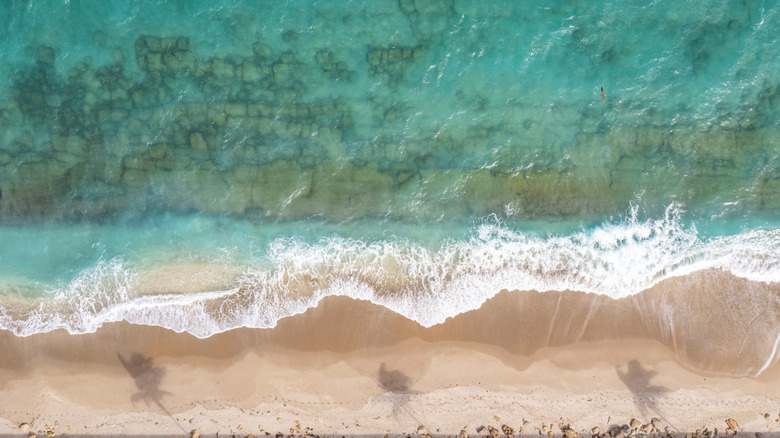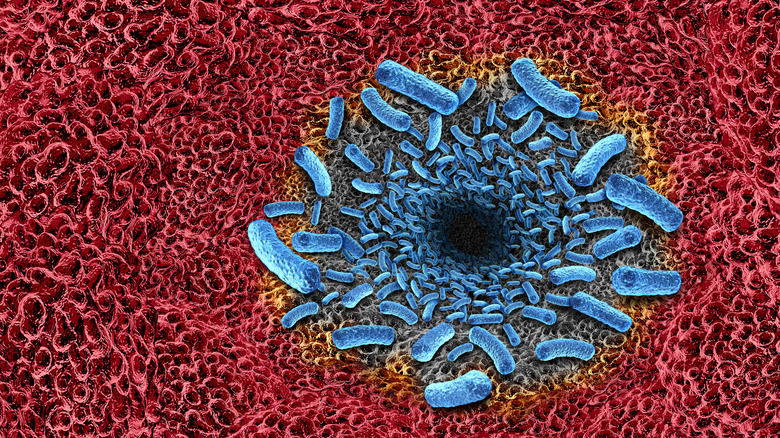What Vacationers Should Know About Deadly Flesh-Eating Bacteria Found In Florida's Waters (And Seafood)
At least four people have died and seven others have fallen ill in Florida this year due to a deadly flesh-eating bacteria known as Vibrio vulnificus. According to Florida health officials, this bacterium resides in warm brackish seawater, essentially areas where fresh and saltwater meet. Despite a recent uptick in headlines about the bacteria, Vibrio vulnificus infections are still rare. However, incidents like hurricanes can create a rise in cases, which is what happened in 2024 following Hurricane Helene.
There are several ways someone can expose themselves to this bacteria, including consuming raw shellfish, particularly oysters, and contact with affected water on an open wound. According to the Cleveland Clinic, there are typically around 100 to 200 cases in the U.S. each year, with most occurring between May and October. They add that people with certain conditions are at a higher risk of infection, such as those with liver disease, kidney failure, diabetes, and weakened immune systems.
How can vacationers protect themselves from exposure?
In some cases, U.S. beaches shut down from harmful bacteria levels, but in the event they stay open, it's still smart to stay vigilant, regardless of whether or not you're at a higher risk of bacterial infections. One way vacationers can protect themselves against Vibrio vulnificus is by not eating or exposing open wounds to raw or undercooked shellfish like oysters. If you do have a craving for oysters, opt for thoroughly cooked options instead, since this will kill off any harmful bacteria.
Second, you might be looking forward to spending time in the water on vacation, but swimming in the ocean with an open cut comes with risks. When it comes to preventing bacteria exposure, the CDC advises you to stay out of the water if you have any type of open wound or cut, including those from piercings or surgery. However, if you absolutely can't resist swimming, they suggest covering up any open skin areas with waterproof bandages.
What if you're exposed to Vibrio vulnificus?
If you fear you've been exposed to Vibrio vulnificus, the first step is to understand the symptoms. The Cleveland Clinic reports that symptoms of this bacterial infection can include fever, chills, painful and swollen skin, redness or rashes, discolored or painful large blisters, nausea, vomiting, diarrhea, dizziness, confusion, and rapid heart rate. These symptoms can lead to more serious complications such as thrombocytopenia (or the lack of blood platelets to stop heavy bleeding), hemorrhage, sepsis, septic shock, a serious skin infection, and organ damage.
If you believe that you or a loved one may have been exposed to Vibrio vulnificus, you should seek emergency medical care immediately because the infection can become deadly if left untreated. In general, though, try to avoid high-risk situations or areas, like the bacteria-rich waters off Kahalu'u Beach in Hawaii, for example. It's important to note that Vibrio vulnificus isn't a Florida issue. Virtually any state where fresh and saltwater sources can converge is susceptible to infection.


